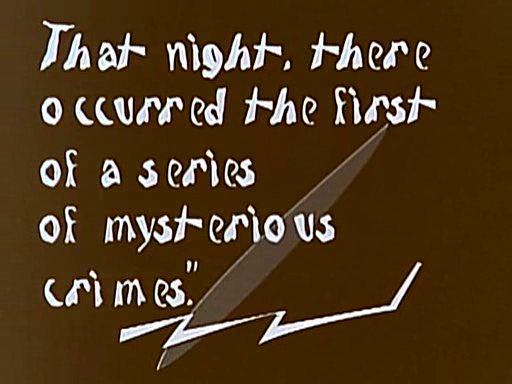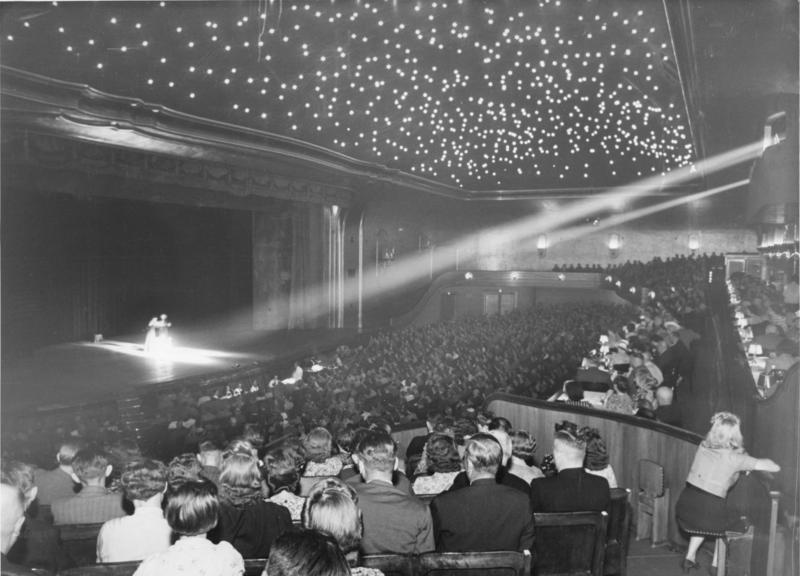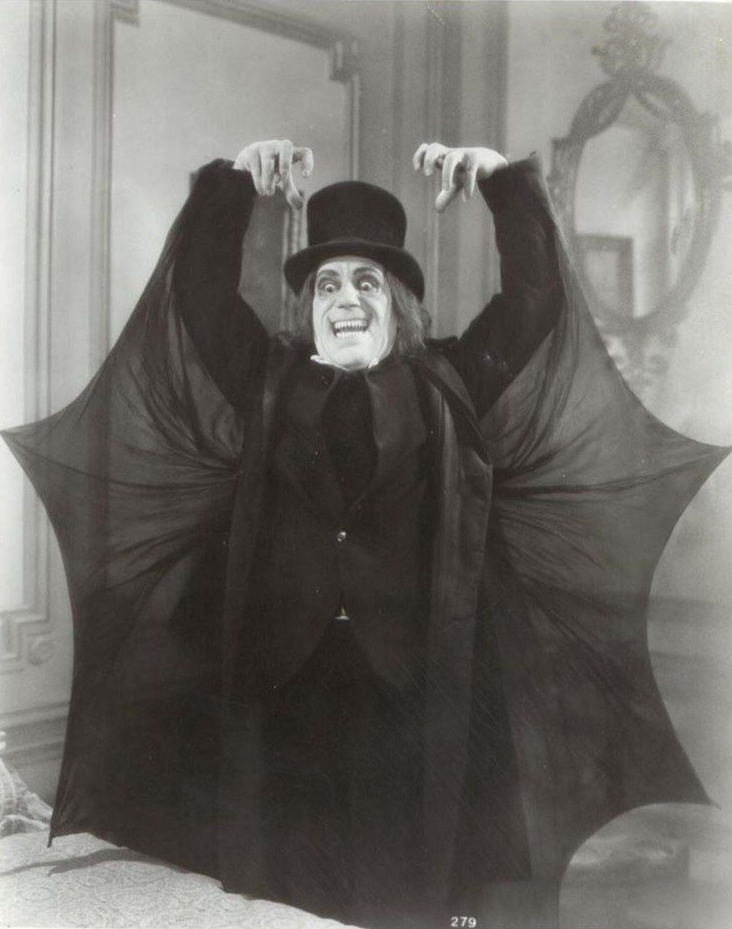|
The Mystery Of Bangalore
''The Mystery of Bangalore'' (German: ''Das Rätsel von Bangalor'') is a 1918 German silent film directed by Alexander Antalffy and Paul Leni and starring Conrad Veidt, Gilda Langer and Harry Liedtke. It is a lost film. Cast * Conrad Veidt Hans Walter Conrad Veidt (; 22 January 1893 – 3 April 1943) was a German film actor who attracted early attention for his roles in the films ''Different from the Others'' (1919), '' The Cabinet of Dr. Caligari'' (1920), and ''The Man Who Laugh ... as Dinja * Gilda Langer as Ellen, the governor's daughter * Harry Liedtke as Archie Douglas References Bibliography * Isenberg, Noah William. ''Weimar Cinema: An Essential Guide to Classic Films of the Era''. Columbia University Press, 2009. External links * 1918 films 1910s German-language films Films of the German Empire German silent feature films Films directed by Alexander Antalffy Films directed by Paul Leni German black-and-white films 1910s German films ... [...More Info...] [...Related Items...] OR: [Wikipedia] [Google] [Baidu] |
Paul Leni
Paul Leni (born Paul Josef Levi; 8 July 1885 – 2 September 1929) was a German filmmaker and a key figure in German Expressionism, making ''Hintertreppe'' (1921) and '' Waxworks'' (1924) in Germany, and '' The Cat and the Canary'' (1927), ''The Chinese Parrot'' (1927), ''The Man Who Laughs'' (1928), and ''The Last Warning'' (1928) in the United States. Life and career Paul Josef Levi was born to a Jewish family in Stuttgart. He became an avant-garde painter at the age of 15, he studied at Berlin's Academy of Fine Arts, and subsequently worked as a theatrical set designer, working for a number of theatres in Berlin (but not with Max Reinhardt). In 1913, he started working in the German film industry designing film sets and/or costumes for directors such as Joe May, Ernst Lubitsch, Richard Oswald, and E. A. Dupont. During World War I, Leni started directing as well with films such as ''Der Feldarzt'' (''Das Tagebuch des Dr. Hart'', 1917), ''Patience'' (1920), ''Die Verschwör ... [...More Info...] [...Related Items...] OR: [Wikipedia] [Google] [Baidu] |
Conrad Veidt
Hans Walter Conrad Veidt (; 22 January 1893 – 3 April 1943) was a German film actor who attracted early attention for his roles in the films ''Different from the Others'' (1919), '' The Cabinet of Dr. Caligari'' (1920), and ''The Man Who Laughs'' (1928). After a successful career in German silent films, where he was one of the best-paid stars of UFA, he and his new Jewish wife Ilona Prager left Germany in 1933 after the Nazis came to power. The couple settled in Britain, where he took British citizenship in 1939. He appeared in many British films, including '' The Thief of Bagdad'' (1940), before emigrating to the United States around 1941, which led to his being cast in what may be his best remembered role as Major Strasser in ''Casablanca'' (1942). This was Veidt's last film role to be released during his lifetime. Early life Hans Walter Conrad Veidt was born on 22 January 1893 in his parents' home at Tieckstraße 39 in Berlin to Amalie Marie (née Gohtz) and Philipp Heinri ... [...More Info...] [...Related Items...] OR: [Wikipedia] [Google] [Baidu] |
Gilda Langer
Gilda Langer (born Hermengild Langer; 16 May 1896 – 31 January 1920) was a German stage and film actress whose career began in the mid-1910s and lasted until her death in 1920. She appeared both on stage and in silent films; however, all films featuring Langer as an actress are now considered lost. Early life Gilda Langer was born Hermengild Langer into a Sudeten German family in Oderfurt, Austria-Hungary (now, Přívoz, Czech Republic). Around 1915, she met Austrian dramaturge and screenwriter Carl Mayer in Vienna who then took her to Berlin and helped her to gain an engagement as a stage actress at the Residenz Theatre. Her first role at the theatre was in a production of the Robert Grötzach-penned 1917 play ''Dyckerpotts Erben''. Film career In 1917, Carl Mayer announced to the film trade press that Langer would begin appearing in leading lady roles in several films for the newly created Berlin-based Star-Film company. Her first film role was in the 1917 Alexander Antalffy ... [...More Info...] [...Related Items...] OR: [Wikipedia] [Google] [Baidu] |
Harry Liedtke
Harry Liedtke (12 October 1882 – 28 April 1945) was a German film actor. Early life Liedtke was born in Königsberg, East Prussia to a merchant as the seventh out of 12 children. After the death of his father in 1896, he grew up in an orphanage and began a qualification in retail business. By the chance acquaintance of Hans Oberländer, a stage director at Berlin, he started to take stage classes and was first engaged at the municipal Theater of Freiberg, Saxony. In 1908 Liedtke worked at the New German Theatre in New York City and in 1909 at the Deutsches Theater Berlin. Career In 1912 Liedtke appeared for the first time in the silent movie ''Zu spät'' and from now on usually as a young "Charming Boy" and gentleman. With Ernst Lubitsch he made movies like ''Das fidele Gefängnis'' (1917), ''Die Augen der Mumie Ma'' (1918), ''Carmen'' (1918), '' Die Austernprinzessin'' (1919), ''Madame DuBarry'' (1919), '' Sumurun'' (1920) and '' Das Weib des Pharao'' (1921). He also appeare ... [...More Info...] [...Related Items...] OR: [Wikipedia] [Google] [Baidu] |
Intertitles
In films, an intertitle, also known as a title card, is a piece of filmed, printed text edited into the midst of (i.e., ''inter-'') the photographed action at various points. Intertitles used to convey character dialogue are referred to as "dialogue intertitles", and those used to provide related descriptive/narrative material are referred to as "expository intertitles". In modern usage, the terms refer to similar text and logo material inserted at or near the start or end of films and television shows. Silent film era In this era intertitles were mostly called "subtitles" and often had Art Deco motifs. They were a mainstay of silent films once the films became of sufficient length and detail to necessitate dialogue or narration to make sense of the enacted or documented events. ''The British Film Catalogue'' credits the 1898 film ''Our New General Servant'' by Robert W. Paul as the first British film to use intertitles. Film scholar Kamilla Elliott identifies another early use of ... [...More Info...] [...Related Items...] OR: [Wikipedia] [Google] [Baidu] |
Cinema Of Germany
The film industry in Germany can be traced back to the late 19th century. German cinema made major technical and artistic contributions to early film, broadcasting and television technology. Babelsberg Studio, Babelsberg became a household synonym for the early 20th century film industry in Europe, similar to Hollywood later. Germany witnessed major changes to its identity during the 20th and 21st century. Those changes determined the periodisation of national cinema into a succession of distinct eras and movements. History 1895–1918 German Empire The history of cinema in Germany can be traced back to the years shortly after the medium's birth. On 1 November 1895, Max Skladanowsky and his brother Emil demonstrated their self-invented movie projector, film projector, the Bioscop, at the Berlin Wintergarten theatre, Wintergarten music hall in Berlin. A 15-minute series of eight short films were shown – the first screening of films to a paying audience. This performance pre ... [...More Info...] [...Related Items...] OR: [Wikipedia] [Google] [Baidu] |
Silent Film
A silent film is a film with no synchronized recorded sound (or more generally, no audible dialogue). Though silent films convey narrative and emotion visually, various plot elements (such as a setting or era) or key lines of dialogue may, when necessary, be conveyed by the use of title cards. The term "silent film" is something of a misnomer, as these films were almost always accompanied by live sounds. During the silent era that existed from the mid-1890s to the late 1920s, a pianist, theater organist—or even, in large cities, a small orchestra—would often play music to accompany the films. Pianists and organists would play either from sheet music, or improvisation. Sometimes a person would even narrate the inter-title cards for the audience. Though at the time the technology to synchronize sound with the film did not exist, music was seen as an essential part of the viewing experience. "Silent film" is typically used as a historical term to describe an era of cinema pri ... [...More Info...] [...Related Items...] OR: [Wikipedia] [Google] [Baidu] |
Lost Film
A lost film is a feature or short film that no longer exists in any studio archive, private collection, public archive or the U.S. Library of Congress. Conditions During most of the 20th century, U.S. copyright law required at least one copy of every American film to be deposited at the Library of Congress at the time of copyright registration, but the Librarian of Congress was not required to retain those copies: "Under the provisions of the act of March 4, 1909, authority is granted for the return to the claimant of copyright of such copyright deposits as are not required by the Library." A report created by Library of Congress film historian and archivist David Pierce claims: * 75% of original silent-era films have perished. * 14% of the 10,919 silent films released by major studios exist in their original 35 mm or other formats. * 11% survive only in full-length foreign versions or film formats of lesser image quality. Of the American sound films made from 1927 to 1 ... [...More Info...] [...Related Items...] OR: [Wikipedia] [Google] [Baidu] |
1918 Films
The year 1918 in film involved some significant events. __TOC__ Events *January 27 – Tarzan makes his film debut in ''Tarzan of the Apes''. *March 10 – Warner Bros. release their first produced picture, ''My Four Years in Germany''. *July – The animated ''The Sinking of the Lusitania'' is one of the first examples of animation being used for something other than comedy. *Following litigation for anti-trust activities, the Motion Picture Patents Company disbands. *Louis B. Mayer arrives in Los Angeles and forms Louis B. Mayer Pictures Corporation. *28 mm safety standard film, designed by Alexander Victor, becomes one of the earliest film formats to use "safety film" film base, bases in order to safeguard the amateur market against nitrate fires. Top-grossing films (U.S.) Notable films released in 1918 Argentina *''Buenos Aires tenebroso'', directed by Juan Glize *''En un día de gloria'', directed by Mario Gallo and Alberto Traversa *''La garra porteña'', direct ... [...More Info...] [...Related Items...] OR: [Wikipedia] [Google] [Baidu] |
1910s German-language Films
Year 191 ( CXCI) was a common year starting on Friday (link will display the full calendar) of the Julian calendar. At the time, it was known as the Year of the Consulship of Apronianus and Bradua (or, less frequently, year 944 ''Ab urbe condita''). The denomination 191 for this year has been used since the early medieval period, when the Anno Domini calendar era became the prevalent method in Europe for naming years. Events By place Parthia * King Vologases IV of Parthia dies after a 44-year reign, and is succeeded by his son Vologases V. China * A coalition of Chinese warlords from the east of Hangu Pass launches a punitive campaign against the warlord Dong Zhuo, who seized control of the central government in 189, and held the figurehead Emperor Xian hostage. After suffering some defeats against the coalition forces, Dong Zhuo forcefully relocates the imperial capital from Luoyang to Chang'an Chang'an (; ) is the traditional name of Xi'an. The site had been ... [...More Info...] [...Related Items...] OR: [Wikipedia] [Google] [Baidu] |
Films Of The German Empire
A film also called a movie, motion picture, moving picture, picture, photoplay or (slang) flick is a work of visual art that simulates experiences and otherwise communicates ideas, stories, perceptions, feelings, beauty, or atmosphere through the use of moving images. These images are generally accompanied by sound and, more rarely, other sensory stimulations. The word "cinema", short for cinematography, is often used to refer to filmmaking and the film industry, and to the art form that is the result of it. Recording and transmission of film The moving images of a film are created by photographing actual scenes with a motion-picture camera, by photographing drawings or miniature models using traditional animation techniques, by means of CGI and computer animation, or by a combination of some or all of these techniques, and other visual effects. Before the introduction of digital production, series of still images were recorded on a strip of chemically sensitize ... [...More Info...] [...Related Items...] OR: [Wikipedia] [Google] [Baidu] |
German Silent Feature Films
German(s) may refer to: * Germany (of or related to) **Germania (historical use) * Germans, citizens of Germany, people of German ancestry, or native speakers of the German language ** For citizens of Germany, see also German nationality law **Germanic peoples (Roman times) * German language **any of the Germanic languages * German cuisine, traditional foods of Germany People * German (given name) * German (surname) * Germán, a Spanish name Places * German (parish), Isle of Man * German, Albania, or Gërmej * German, Bulgaria * German, Iran * German, North Macedonia * German, New York, U.S. * Agios Germanos, Greece Other uses * German (mythology), a South Slavic mythological being * Germans (band), a Canadian rock band * "German" (song), a 2019 song by No Money Enterprise * ''The German'', a 2008 short film * "The Germans", an episode of ''Fawlty Towers'' * ''The German'', a nickname for Congolese rebel André Kisase Ngandu See also * Germanic (other) * Germ ... [...More Info...] [...Related Items...] OR: [Wikipedia] [Google] [Baidu] |








